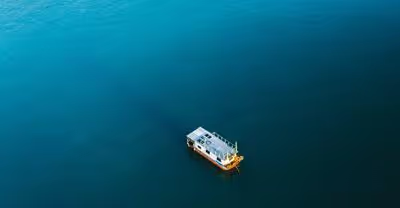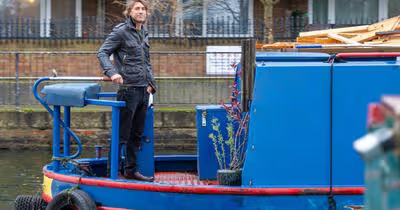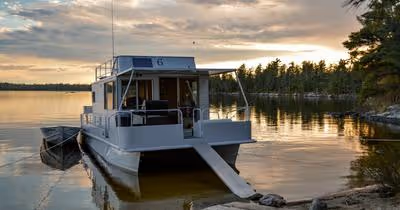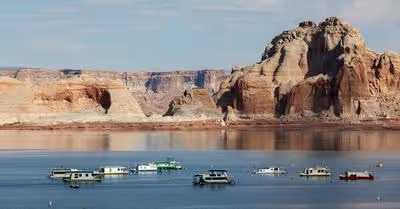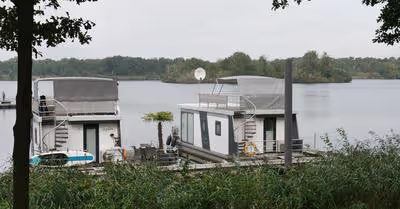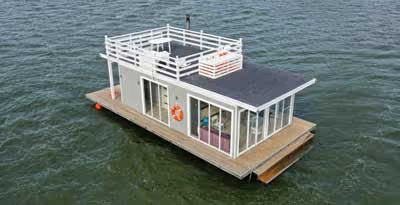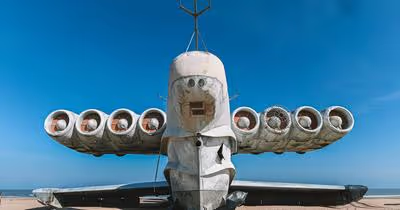
Key Takeaways
- Amphibious aircraft and ground effect vehicles are the half plane-half boat concept.
- The Caspian Sea Monster is a unique example of a ground-effect vehicle.
- These hybrid designs showcase innovation in tackling complex transportation challenges.
Navigating the mystery of the half-plane, half-boat concept? Unravel the truth behind this enigmatic idea in our enlightening article.
Yes, a half-plane and half-boat concept exists! Known as an "Ekranoplan," it's a unique ground-effect vehicle that resembles both a plane and a boat. Ekranoplans fly close to the surface, utilizing the ground effect to gain lift.
I've had the incredible opportunity to explore these fascinating ground-effect wonders firsthand. From witnessing their astonishing flights to gathering insights from fellow experts, I'm thrilled to share my passion and knowledge with you.
Does A Half Plane And Half Boat Exist?
The idea of a half-plane-half-boat vehicle taking advantage of advanced technologies has sparked curiosity. Although a true half-boat and half-airplane hybrid don't exist in a conventional sense, there are innovations that come close to bridging the gap between marine and aviation transportation.
These vehicles capitalize on unique design elements and perform equally well on land, water, or in the air. One example that stands out is an amphibious aircraft, which has the ability to take off and land on both water and land surfaces.
Additionally, ground effect vehicles (GEVs) or wing-in-ground effect (WIG) aircraft are impressive creations that exploit the ground effect phenomenon to glide above the Earth's surface. A noteworthy instance of this design can be found in the Caspian Sea Monster, a marvel of Soviet Union engineering that gave a new meaning to the combination of boat and airplane functionality.
Common Half Plane and Half Boat Designs
The half airplane half boat phenomenon relies on the unique combination of boat bottom design and plane wing type that enables it to operate in ground effect. The design and engineering of these crafts ensure that they can experience the best of both worlds, operating efficiently on the sea's surface while taking advantage of aviation technology for increased speed and range.
Boat Bottom Design
A half-plane half-boat, also known as a ground-effect vehicle, operates using the lift generated from its wings in close proximity to the sea. Some common boat bottom designs found in these vehicles blend features of boats and planes.
The boat-like fuselage consists of a hydrodynamically shaped base to allow smooth water flow, providing buoyancy like a boat. This design enables the craft to lift off from the water and reach high speeds. An example of such a design is the Soviet Union's creation, the Caspian Sea Monster, a wing-in-ground effect (WIG) vehicle.
Plane Wing Type
The plane wing type plays a critical role in ground-effect vehicles. A wing-in-ground effect, or WIG, features wings designed to produce lift when flying in close proximity to the ground or sea surface. There are several types of wings adopted within WIG designs, such as Ekranoplan and Seaglider.
Ekranoplan is a type of WIG vehicle designed by the Soviet Union. Some noteworthy features of the Ekranoplan are:
- Length: more than 100 meters
- Wingspan: 40 meters
- Speed: 600 km/h (373 mph)
Below is a table of some common ground effect vehicles and their attributes:
The key to these innovative sea craft operating efficiently is the exploitation of the ground effect, which allows them to soar over the sea in a way that blends features from both boats and aviation. Utilizing the lift generated by the ground effect enables these vehicles to achieve times faster speeds while maintaining a low altitude, typically just a few meters above the water.
Technical Specifications and Performance
By combining the capabilities of planes and boats, ground-effect vehicles provide a unique and potentially more efficient means of transportation, especially when it comes to speed, range, and payload capacity.
While these high-speed seacrafts are still not as widespread as conventional boats or aircraft, the increasing integration of advanced technology in transportation paves the way for further development of the half-plane half-boat concept, making the idea of such multipurpose vehicles a reality for the future of transportation.
Speed and Range
Half plane half-boat concepts are vehicles that possess features of both planes and boats, combining the capabilities of landing and taking off from water while maintaining high speeds and capacities. A prominent example of such a vehicle is the ground effect vehicles (GEVs), which are also known as wing-in-ground (WIG) effect crafts.
These seacrafts benefit from the ground effect phenomenon to elevate their performance, making them remarkably faster than traditional boats and, in some cases, even comparable to aircraft.
For instance, the Soviet Union developed the Caspian Sea Monster, an enormous half-plane half boat capable of reaching speeds up to 373 mph (600 km/h).
On average, ground effect vehicles are designed to achieve high speeds in the range of 100 to 400 km/h (60 to 250 mph), several times faster than conventional boats, while having a range that can extend up to 1000 km (620 miles) or more, depending on their fuel capacity and efficiency.
To put things into perspective, some key performance specifications are shown below:
- Speed: 100-400 km/h (60-250 mph)
- Range: Up to 1000 km (620 miles) or more
Payload Capacity
Half plane half boat designs are developed to serve various purposes, from the transportation of passengers to military use and cargo shipping. The payload capacity depends on the size and design of the vehicle, but in general, these ground-effect vehicles offer competitive payload capacities in comparison to their alternatives in aviation and marine transportation.
For instance, the Caspian Sea Monster, developed during the Soviet Union era, had a huge payload capacity of 540 metric tons (220,462 lb).
In contrast, smaller ground effect vehicles, such as seaplanes, for example, the AirFish, are designed to carry up to about 8 passengers with luggage, offering a more private and compact transportation experience.
To give you a clearer picture, here is a simple comparison table of different half plane half boat payload capacities:
Usage Scenarios and Applications
Sea crafts that combine the features of boats and planes offer a myriad of possible applications. From recreational and commercial use to aiding in emergency and rescue operations, this innovative concept has the potential to change the world of transportation and aviation.
Recreational Use
Imagine taking the family out on the water for a fun-filled afternoon on a half-plane, half-boat. With a unique design combining characteristics of both boats and aircraft, a high-speed seacraft like this provides the opportunity to explore the sea at impressive speeds.
In this recreational setting, ground-effect vehicles or wing-in-ground-effect (WIG) aircraft can offer an unparalleled experience of gliding above the water's surface at much faster speeds compared to conventional boats.
Some examples of these innovative sea crafts include the Electric Seaglider and the Hydroptère, both capable of reaching impressive speeds for exhilarating sailing adventures.
Commercial Use
In the realm of commercial transportation, integrating the features of a half-plane and a half-boat could revolutionize the transportation industry. Wing-in-ground-effect aircraft operating as ferries in congested waterways can provide a faster, more efficient mode of transport.
These sea crafts also have the potential to connect coastal cities, unlocking new, environmentally-friendly transportation possibilities.
Moreover, some benefits of using these vehicles for commercial purposes include:
- Cost-effective and fuel-efficient operations
- Reduced noise and air pollution
- No need for airports or harbors
Emergency and Rescue
In times of crises, the agility of a half airplane and half boat can provide a significant advantage. Ground-effect vehicles, given their potential to navigate across water surfaces quickly, can be invaluable for emergency and rescue missions in maritime environments.
For example, the Caspian Sea Monster, a WIG aircraft developed by the Soviet Union during the cold war, was initially designed for military use but can be repurposed for civilian rescue operations.
Unique Flying Experience
Imagine being able to soar just above the waves without the need to reach high altitudes or deal with runway take-offs. The half-plane, half-boat design of wing-in-ground-effect aircraft offers a unique, crowd-pleasing flying experience for passengers and enthusiasts alike.
With the aviation industry working towards developing such seacrafts, our future may hold an entirely new mode of travel that blends the joys of boating and flying.
Challenges and Limitations
Creating a practical half-plane half-boat entails addressing regulatory issues, cost factors, and safety concerns. Bridging the gaps between aviation and marine regulations, tackling the potentially high expenses of development, production, and maintenance, and ensuring a safe and stable vehicle for both land and sea operations are significant challenges that must be tackled for such a concept to become a feasible and viable means of transportation.
Regulatory Issues
One major challenge in developing a hybrid seacraft like a half-plane half-boat is complying with regulatory requirements. Aviation agencies such as the Federal Aviation Administration (FAA) in the US or the European
Aviation Safety Agency (EASA) in the EU have stringent regulations in place for aircraft and must approve the construction, maintenance, and use of such vehicles. Similarly, the Coast Guard and other marine regulatory agencies oversee the safety and operation of boats and ships.
Navigating these regulatory frameworks for a half airplane that combines elements of both planes and boats could prove challenging, particularly in terms of obtaining necessary licenses and certifications for potential operators.
Ground effect vehicles, which are a cross between planes and boats, have faced similar regulatory obstacles, most notably the now discontinued Soviet Union's wing in ground effect (WIG) crafts, known as "Caspian Sea Monsters."
Cost Factors
Another key limitation in developing a sea craft that blends the features of planes and boats is the cost. The development and production processes will likely involve high R&D expenses, custom components, and unique manufacturing methods.
For example, building a high-speed wing in ground effect sea craft would require specialized materials, careful design, and precise engineering to achieve the desired results.
Moreover, maintenance costs for a half boat half plane could also be much higher than for traditional aircraft or boats due to the dual requirements of maintaining both plane and boat components. These cost factors could present a significant barrier for potential customers and manufacturers, making the development of such a vehicle relatively difficult to realize.
Safety Concerns
Safety is another critical challenge in creating a half-boat half-plane. Balancing stability, performance, and durability is essential for ensuring safety in both air and water domains.
Operating at high speeds, such as ground-effect vehicles and WIG crafts, requires an understanding of lift and drag forces to maintain safe and stable flight. Additionally, many traditional planes and boats face specific safety issues related to their respective environments, such as water and land operations.
Here’s a table showing the safety concerns of these machines.
Developing a hybrid sea craft would entail addressing concerns specific to both planes and boats, making safety an even more complex challenge to overcome.




